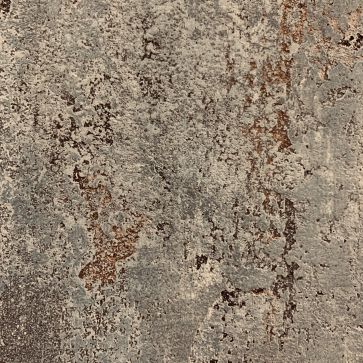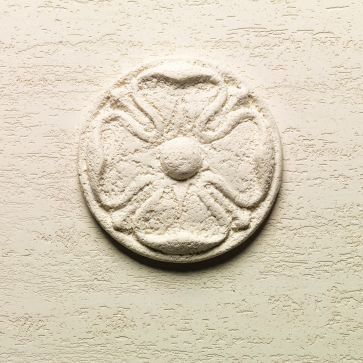Decorative plaster in the technique of "Map of the World"
Plaster "Map of the World" is a unique coating on the surface of the wall, which is distinguished by its relief and texture. Due to the combination of mineral components and natural lime in the mixture, as well as the use of large fractions, original textures and stains are obtained, reminiscent of a real map surface.
"Map of the World": decorative plaster and its characteristics
The term includes a unique technique for applying different types of plaster materials that allow you to achieve a textured surface. To get the original relief, textured plaster is used, which is applied in several approaches. As a result, it is possible to achieve shapes and areas on the wall that are visually similar to real islands / continents, which gave the name to the technique.
The characteristics of decorative plaster "World Maps" in the interior include:
1. It has a natural basis, and therefore is completely safe for human health and the environment.
2. Resistant to fungus and mold, can be used in wet areas, including the kitchen.
3. Lets air through, providing natural ventilation of the surface and recreating a cozy microclimate.
4. Easy to clean, wash with basic detergents and soft cloths if dirty.
5. It has a long service life, minimal wear and is easily restored in case of damage.
The texture of the "Map of the World" is unique: it can be both embossed and smooth, created with the help of fillers and additions in the composition of the mortar, which will help to recreate the desired shape.
As a rule, natural lime is included in the composition of decorative coatings that are used for this technique. Its large fractions make it possible to turn the surface into a textured one, thanks to which the coating looks festive and solemn. Applications include living rooms, bedrooms and hallways, as well as other residential and commercial areas.
%20%D0%BE%D0%B1%D0%BB%D0%BE%D0%B6%D0%BA%D0%B0.jpg)
Application of decorative plaster "Map of the World" in stages
It is quite possible to apply the “Map of the World” plaster with your own hands, the main thing is to purchase the right decorative material, and also follow the instructions below.
Required Tools
To work with the material you will need certain tools. If you do not have the appropriate skills to work with plaster, use the following tool combinations - trowel with trowel, sponge + trowel, brush + trowel / trowel or roller + trowel / trowel. If you have advanced skills, you can only use the trowel.
You will also need other additional tools, for example, a tray, with which it will be more convenient to roll the material with a roller.
Surface shaping
To apply the first layer, it is necessary to prepare the wall, make it uniform, smooth and even. A primer is applied before plastering, the wall is puttied and leveled with high quality. Otherwise, it will be impossible to obtain a high-quality relief and result.
Preparation includes such nuances:
• Priming of the surface with a special strengthening soil mixture;
• Drying of the soil for a minimum of twelve hours;
• Subsequent priming with the use of an adhesive primer containing particles of quartz sand;
• Drying of the quartz coating for at least eight hours.
It is important to use only stainless steel tools, which, when in contact with the white solution, will not leave rust marks.
Primary overlay
Initially, the material is applied in accordance with the thickness of the fractions that are present in its composition. As a rule, it is 1.6 mm. To do this, the plaster is transferred with a spatula to the trowel, stretching it along the entire working edge, and then rubbed along the walls with a uniform, neat layer. There is also no need to smooth the surface. You can use a pile roller, which should be walked over the finished, slightly dried layer. This is how the “fur coat” relief is formed, but if you use plaster with increased fractions, this will be redundant.
Re-laying and embossing
Plaster "Map of the World" in the interior can be created in several ways, but we will consider the most popular of them, which allows you to create an expressive and embossed pattern.
The mixture must be qualitatively distributed not over the entire wall, but painted over with separate, local fragments. For convenience, use a sponge or brush, in case of their absence, a trowel, which will help to pick up the solution and distribute it along the wall. Pierce separate sections, overlapping the first layer not to the very end, and then leave for five minutes until it dries slightly. Then carefully smooth the coating with a trowel, forming separate islands.
Important! To get a more original relief, during the grouting stage, it is necessary to leave uneven edges that are characteristic of a real map.
Finishing
After both layers have been applied, and the islands have been formed, it is necessary to begin the process of finishing.
It consists in protecting the coating by applying wax or varnish. If you want to give it an additional color - you can add a special dye to the wax or varnish, use color compositions - metallic waxes, varnishes with mother of pearl or chameleon blue.
Wax can be rubbed over the surface with a clean, dry sponge or paint mitt, brush. To avoid visible traces of application after drying, it is recommended to apply it in a circular motion.
In the case of varnish, you will need a foam-based roller, which will allow you to achieve greater expressiveness.
Buy decorative plaster "Map of the World" in Elf Decor
Here you can find unique decorative coatings "Map of the World", which will help create a bright and original interior design.
You can choose almost any type of decor from our catalog that is suitable for use in the declared technique. However, we recommend paying special attention to plasters that contain large fractions. As a result, after applying them, you can get a unique pattern and crevices that will make the card more stylish and original.
Among these is Grotto plaster, developed on the basis of natural lime. After application, it creates a rough, voluminous pattern, with which it is quite easy to form islands and entire continents.
The second option is the Persia coating. Unlike the first, such decorative plaster "Map of the World" has a rough, iridescent coating that will change shades depending on the angle of view. This is made possible by the presence of mother-of-pearl particles and marble dust in the composition, which will make the card suitable for a modern, bright interior.



